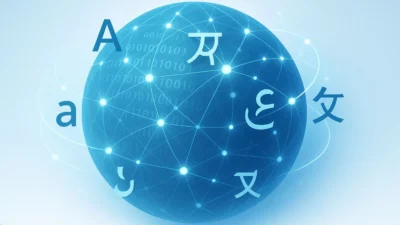
The different modes of interpreting; do you know them all?
There are different modes of interpreting and, despite the popular belief, not all of them have the same use. Depending on what it is needed for, interpreting can be done in a number of ways, and not all interpreters can work in all the modes. Curious to learn more? If you have any questions about how they work and when to apply them, be sure to check out our post.
What is simultaneous interpreting (in a booth)
In simultaneous interpreting, the interpreter translates the speaker’s words orally, almost simultaneously. Here, a team of simultaneous interpreters is required, and the assistance of technicians. As a result, this type of interpreting must take place in rooms in which the necessary equipment can be set up (a soundproof booth, special sound equipment, receivers, and microphones).
This type of interpreting delivers the best results due to the quality, immediacy and smoothness of communication. This mode is widely used by international organizations, international congresses and conferences, and at technical meetings with a fairly large audience or meetings requiring interpretation into several languages.
The level of expertise, attention, and concentration of interpreters is very high in this mode and, depending on the duration of the session, the interpreters must work in teams and relieve each other from time to time. Half-day and whole-day sessions have two interpreters per language, while mini conferences lasting up to an hour and a half need only one interpreter.
Simultaneous interpreting using an infoport
An infoport is a portable, wireless, simultaneous-interpreting station. It consists of a simple kit (carrying case, microphone and headphones) that enables users to go to meetings and move around the venue with no loss of sound quality. It is commonly used for guided tours, plant or factory visits, and meetings with up to 20 participants.
Whispered simultaneous interpreting (chuchotage)
The interpreter stands behind the person or persons (maximum of three participants) who do not speak the working language and simultaneously translates the speaker’s message orally (whispering). He or she then interprets the client’s responses back to the other participants.
This mode is commonly used in short work meetings, where one or two participants do not speak the common working language used in the meeting.
What is consecutive interpreting
There are 2 types of consecutive interpreting: consecutive and liaison or bilateral.
Consecutive interpreting is another well-known interpreting technique. The work method used is different in this case. When using this approach, the speaker pauses from time to time to allow the interpreter to speak.The interpreter is usually located close to the speaker and takes notes on the main ideas being expressed.
When comparing consecutive to simultaneous interpreting, the main disadvantage of this approach is that the listener does not receive the message as directly and must be patient.
Because of its characteristics, this method of interpreting tends to be used for short meetings or in courtrooms. For example, communication during a press conference can add over 80-90 percent to the estimated time due to the pauses needed to translate the message. Technical resources are less important in this case.
Bilateral interpreting, also known as liaison interpreting, is commonly used to overcome language barriers at meetings in both the public and private sector. The interpreter orally translates for each speaker in the two working languages without any need for equipment. It is one of the most widely used methods for courtroom and police interpreting and for services providing support for immigrants and asylum seekers.
Telephone Interpreting, what it is and when to use it (OPI)
Telephone interpreting is a language support system in which you can get an interpreter immediately over the telephone. It can form part of the on-site interpreting service, using a telephone in hands-free mode, or through a telephone call to our call center.
The main advantage of this kind of interpreting is the immediacy and the cost savings, as the user can contact an interpreter for any of the language combinations offered, from any part of the world, in under two minutes, with nothing more than a cellphone.
It is the interpreting system most used by emergency response services and public services in hospitals and schools due to the convenience of having an on-demand service with no access fees and no minimum charge, as the user pays only for the duration of the interpretation. Companies and/or executives that request telephone interpreting usually arrange for the service in advance, and it can even be set up as a conference call with a number of participants. Generally, telephone interpreting is consecutive.
Video Remote Interpretation (VRI)
This is a professional interpreting service using videoconferencing on a computer, tablet, or smartphone. This mode is very often used when there is no local interpreter available or when the travel costs for an interpreter are just not feasible, allowing companies to have a truly global reach.
Its advantage over telephone interpreting is the elimination of visual barriers, since the interpreter can see the speaker’s gestures and body language, which helps the clarity when transmitting the message.
This service, which is normally used by small and medium-sized businesses and large corporations, is now becoming popular for public service interpreting. It must be arranged in advance and the technical requirements are simple given its online format.
Sign language
Finally, we would like to comment on another interpreting mode.
Sign language is the language used by people with a hearing disability and those live or associate with them. Sign language has its own grammatical structure and vocabulary, so it is not just a transposition of spoken language but is a language in itself, with its own system.
This type of service tends to be used for conferences and events, social services, schools, training courses, and television programs.
What to look for in an interpreting service
Regardless of the type of interpreting needed in each case, it is important to remember that when choosing an interpreter, the field of specialization is as important as the interpreter’s experience. Interpreters must have excellent public speaking skills and the intellectual ability to immediately translate idioms, colloquialisms, and other specific cultural references so that the receiver can understand them.
Seprotec is committed to excellence and the highest quality in the services it provides and that is why it always has the best professionals in the sector. We currently have a extensive database of interpreters worldwide, classified by language combination, interpreting mode, specialization, and technical expertise. This excellent team plus a strong commitment to innovation and the incorporation of the latest technological advances in the sector allow us to offer a wide range of services in any multilingual situation and has placed us among the 20 largest companies offering interpreting services in the world, according to a study carried out by Nimdzi (The Nimdzi Interpreting Index, 2019).





